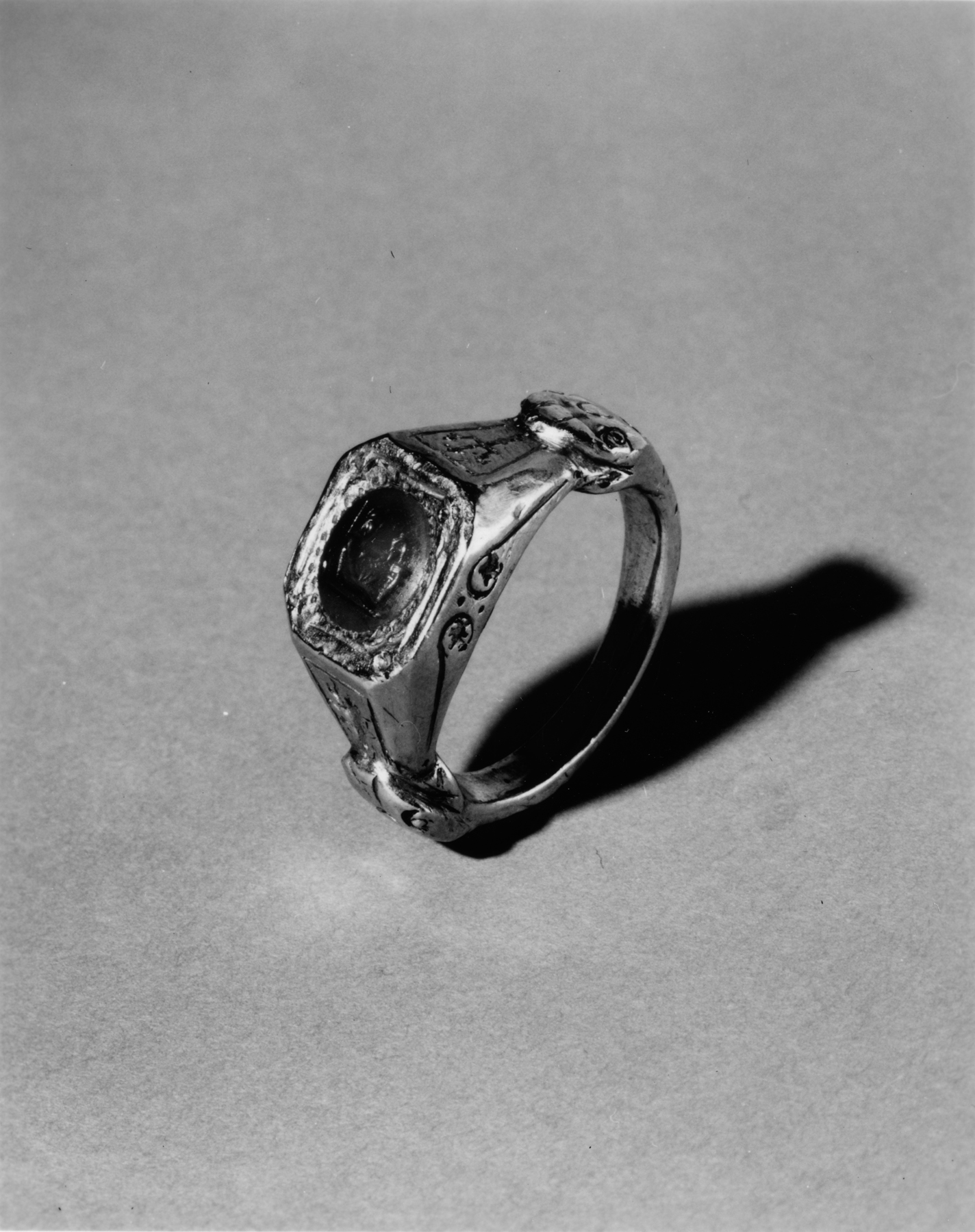Ring with an Intaglio of Dionysus
The shoulders of this massive ring are engraved with a torch and a trident, and terminate in the jaws of large snake heads. The carnelian depicts a reclining male figure leaning on a staff. Wreaths on his head and in his right hand identify him as the wine-god Dionysus. Before him stands what may be another torch or a horn of plenty, both of which, like snakes, were symbols of Dionysus: snakes represented wild animals over which the god presided, while torches may allude to the "Lampteria," the "Festival of Torches" celebrated in Dionysus's cult.
Provenance
Provenance (from the French provenir, 'to come from/forth') is the chronology of the ownership, custody, or location of a historical object. Learn more about provenance at the Walters.
Dikran Kelekian, New York and Paris [date and mode of acquisition unknown]; Henry Walters, Baltimore, 1926, by purchase; Walters Art Museum, 1931, by bequest.
Exhibitions
| 2010 | Bedazzled: 5,000 Years of Jewelry. El Paso Museum of Art, El Paso. |
| 1979-1980 | Jewelry - Ancient to Modern. The Walters Art Gallery, Baltimore. |
| 1947 | Early Christian and Byzantine Art. Baltimore Museum of Art, Baltimore. |
Conservation
| Date | Description | Narrative |
|---|---|---|
| 12/14/1978 | Examination | examined for condition |
Geographies
Roman Empire (Place of Origin)
Measurements
H: 1 in. (2.6 cm)
Credit Line
Acquired by Henry Walters, 1926
Location in Museum
Not on view
Accession Number
In libraries, galleries, museums, and archives, an accession number is a unique identifier assigned to each object in the collection.
In libraries, galleries, museums, and archives, an accession number is a unique identifier assigned to each object in the collection.
57.1114


